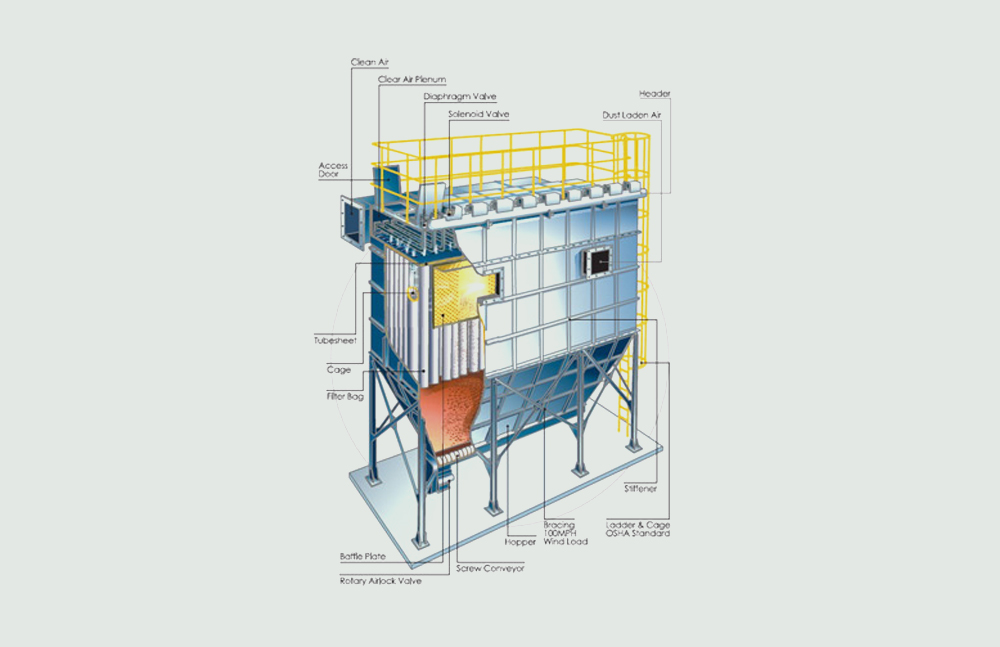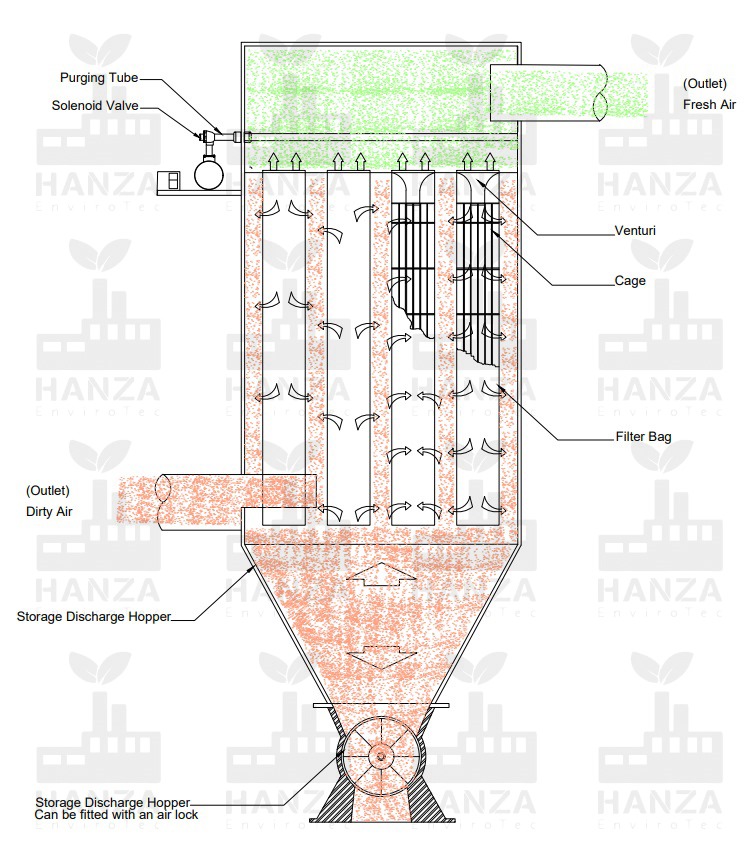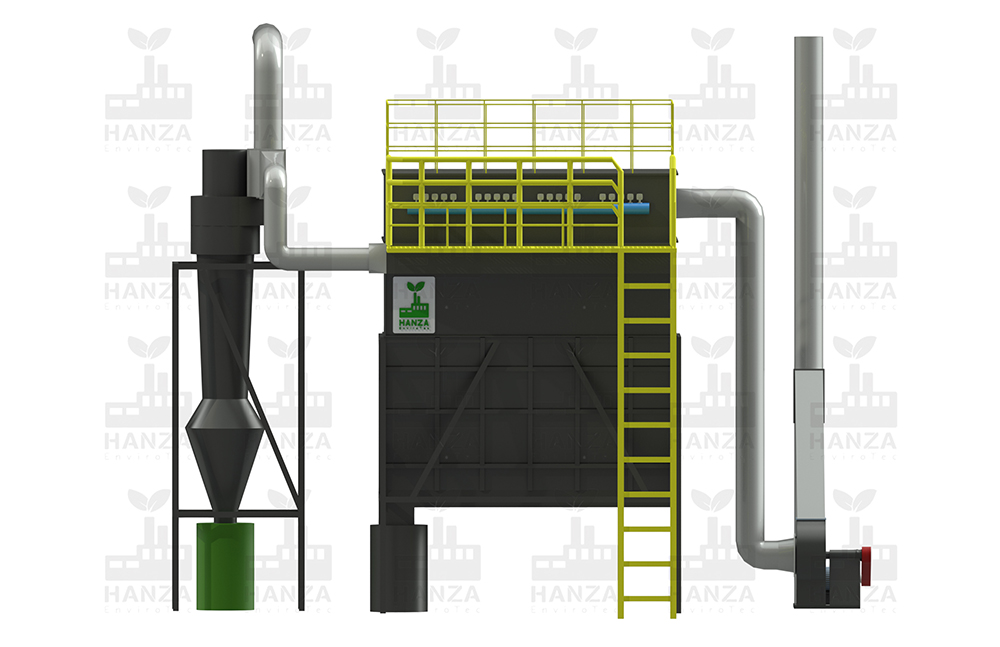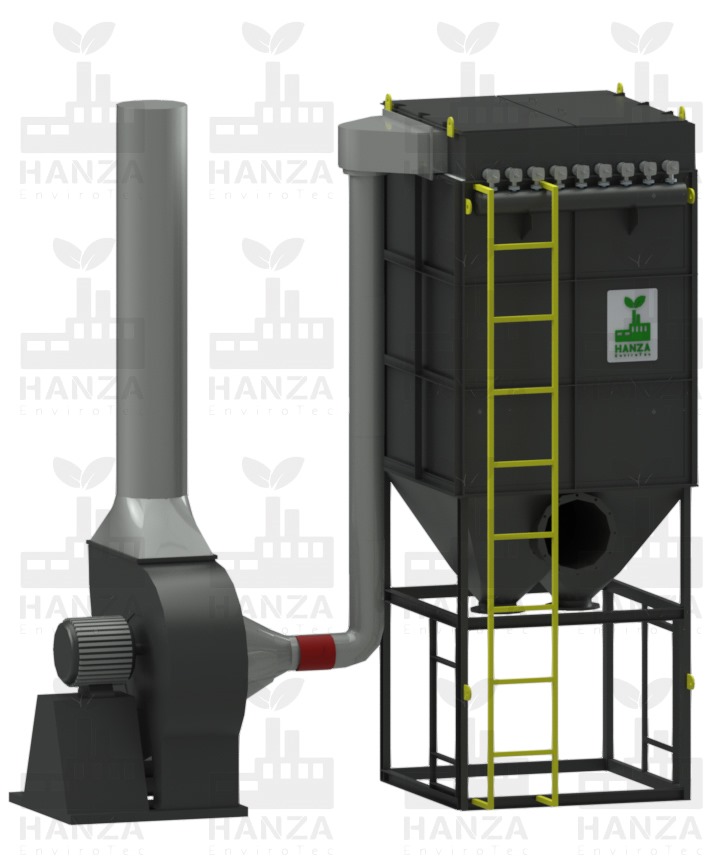- Home
- About Us
- Products
Air Pollution Control System
Industrial Blower
Indoor Air Quality (IAQ) Solution
Ventilation System
Filter Accessories
Steel Fabrication
- Applications
- Service
- Gallery
- Contact us
- Home
- About Us
- Products
Air Pollution Control System
Industrial Blower
Indoor Air Quality (IAQ) Solution
Ventilation System
Filter Accessories
Steel Fabrication
- Applications
- Service
- Gallery
- Contact us
- Home
- Products
- Air Pollution Control System
- Jet Pulse Bag Filter

Jet Pulse Bag Filter
Jet Pulse Bag Filters are traditionally recognized as standard dedusting filters. HANZA ENVIROTEC has innovated and enhanced the designs of these filters to offer an array of advantages including:
- Extended filter bag lifespan
- Reduced emission levels
- Minimized pressure drops
- Decreased power usage
- Superior air to cloth ratios
- Optimized performance metrics
- Space-efficient design
We pride ourselves on offering tailor-made bag filters, specifically designed based on individual application requirements. These filters are especially suitable for environments with substantial airflow, elevated temperatures or when handling challenging materials.
HANZA ENVIROTEC’s Air Quality Management System especially the Pulse Jet Bag Filter, boasts exceptional filtration capabilities. It can significantly reduce emission levels to a mere 2 mg/nm3. Acknowledging that emission criteria can vary from one region to another, HANZA ENVIROTEC ensures its devices inclusive of the pulse jet bag filters, can be customized to meet specific local regulations. This adaptability ensures the highest standards in maintaining pollution control benchmarks.
- Polluted air or gas enters the system through the dust collector’s inlet.
- As this air traverses the filter media, solid impurities get trapped on the media’s exterior.
- A timer-initiated prompt activates a solenoid valve, which is usually in its closed state.
- This prompts a decrease in air pressure in the adjacent tube, causing the diaphragm valve to open.
- As a result, a rapid burst of compressed air flows from the air header to every filter bag via the purge tube.
- This process momentarily inactivates a whole line of bags through a pressure reversal technique.
- Released contaminants then gather in a collection bin or hopper situated beneath.
- Finally, the cleansed air exits the system via the exhaust port.
Historical Context & Design
The principle of fabric filtration, dating back over a century, continues to be a reliable and efficient method for separating solids from air or gas streams. Around the world, tubular filter fabrics (both WOVEN and NON-WOVEN) in the form of hose bags are prominently utilized. These bags are vertically positioned within a designated enclosure. To ensure these bags remain intact and do not collapse under varying pressures, they are supported by metal cages equipped with venturis.


Cleaning Process
The dust accumulation on the filter bags is methodically cleaned either in real-time (online) or when the system is offline. This cleaning process involves short, timed bursts of compressed air directed counter to the primary airflow and is sourced from a clean air compartment. A distinct feature is the venturi located atop the cages, which amplifies the cleaning air volume by drawing in additional air from the upper section. Consequently, the dislodged dust particles, along with any loose dust, accumulate in the bottom hopper of the Pulse Jet Hose Bag Type Filter or Pulse Jet Bag Filter. These particles can then be continually or intermittently discharged through designated bottom removal mechanisms.
Capacity & Design Flexibility
Typically, these Pulse Jet Bag Filters can accommodate air volumes ranging from 1,000 to 500,000 Cum/Hr. These figures can be achieved through either standalone units or flexible modular configurations.
Note: Safety and adherence to HANZA ENVIROTEC’s operational guidelines are paramount when operating our Pulse Jet Bag Filters. Always ensure regular maintenance and checks.


Air Quality Management Equipment
Air quality management equipment, primarily designed for pollution control, captures air laden with dust, particulates, and fumes from various industrial processes. Once these contaminants are separated and filtered out, the equipment releases clean air back into the environment. These systems might go by various names across industries, but they fundamentally consist of elements such as filter bags, cages, cartridges, pulse cleaning valves, timers, blowers, rotary airlock valves (RAV), among others. Here’s a straightforward breakdown of the process:
“Hanza Environment Technology Factory” is located in the heart of the industrial city of ( ICAD 2 ) Abu Dhabi, the factory is specialized in the manufacturing of environmental related products and it highly concentrates on the Air Filtration equipments.
THE COMPANY
Services
Contact
- (+971) 2 4454 054
- info@hanza-envirotec.com
- P.O.Box: 402, Abu Dhabi, UAE
- Mon to Sat - 08:00 to 04:30
